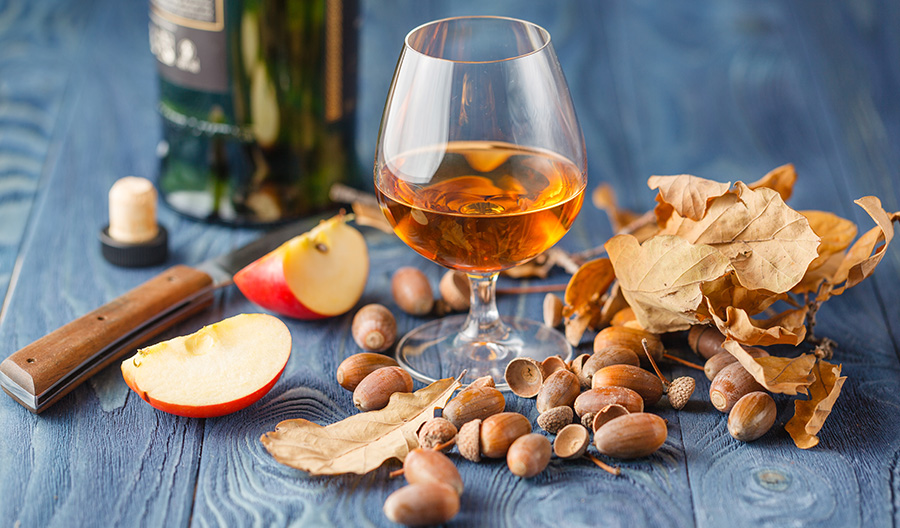Whether you call it applejack, Calvados or bätzi, at its core, apple brandy is any liquor made from fermented and distilled apples.
The category is far more varied than perhaps first meets the eye. There are clear, unaged versions that resemble eau de vie, and amber-hued apple brandies that spend years in oak barrels. Production methods include continuous column stills, copper pot stills and a type of freeze distillation called “jacking.”
The history of apple brandy is fascinating, too, stretching all the way from the 7th-century Silk Road to colonial New Jersey and beyond. Today, the nature of the spirit continues to evolve. In recent years, some U.S. craft distillers have bottled modern apple brandies, iterating on what some consider America’s oldest spirit.
The History of Apple Brandy
“Any fruit with sufficient natural sugars may be fermented and distilled into brandy,” writes Matthew Rowley in The Oxford Companion to Spirits & Cocktails. He traces the origins of brandies to Uighurs in 7th-century China. Rowley believes that Arab rosewater distillation techniques may have inspired Europeans to try their hands at making brandy from local fruits—including tart cider apples—in the Middle Ages.
But specific references to apple brandy are more recent, Rowley writes. He finds an early mention of Calvados, the apple brandy that hails from Normandy, France, at the start of the 19th century. Meanwhile, bätzi—an apple brandy from Switzerland—is at least a century old, estimates Astrid Gerz, the secretariat of the Swiss Culinary Heritage Association.
U.S. drinkers, however, might be most familiar with applejack, an American-born apple brandy that originated in the late 1600s. One early distiller was a Scottish immigrant who settled in Monmouth County, New Jersey, and began to produce his own applejack in 1698. Within about a century-and-a-half, the state was dotted in applejack distilleries.
Applejack is so intertwined in the history of the state. If you were a farmer and you had apple trees on your property, you were producing cider spirits or applejack.
Centuries later, as the U.S. cocktail culture grew in the early 1900s, applejack was prominent in classic recipes like the Jack Rose. The spirit was so popular, it became a lightning rod in anti-Prohibitionist Edward I. Edward’s 1919 bid for New Jersey governor, dubbed “the applejack campaign.”
Prohibition, however, altered many facets of American life—including applejack production and related agriculture. A lot of Prohibitionists cut down apple trees, and that’s how we lost a lot of heritage and historical apple varieties.
After Prohibition was repealed, traditional apple brandy fell out of fashion in the U.S., replaced by other spirits. Some believe that applejack is primed for a resurgence, though, in tandem with the 21st-century cocktail renaissance.
It’s all word of mouth, and bartenders have been a driving force.

There are several ways that producers around the world and throughout millennia have fermented apples and distilled them into brandy. Here’s a look at five common types.
Applejack
Historically, applejack was made with North American cider apples and produced through a method called “jacking” or freeze distillation. Distillers freeze hard cider and then discard the ice, so the slushy liquid left over has a higher alcohol content. It was historically drunk fairly soon after distillation.
Modern applejack, in contrast, is typically distilled in column or pot stills and can be aged in barrels or bottled as a young, clear spirit.
One craft distillery in Purcellville, Virginia, makes its aged apple brandy with steam distillation, while another in Louisville, Kentucky, makes its oak-aged applejack in copper pot stills. A North Carolina uses the traditional freeze distillation method for its applejack..
What’s the difference between applejack and other apple brandies, then? Officially, nothing—but nuances abound.
Applejack and apple brandy are synonymous. But the difference is in the apples, the terroir, the aging process and so forth. It’s kind of like if you look at New World versus Old World wine.

